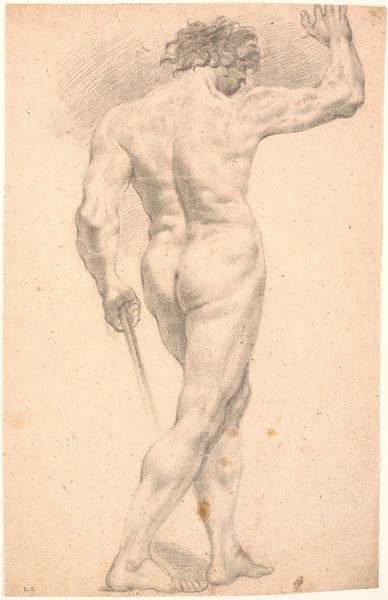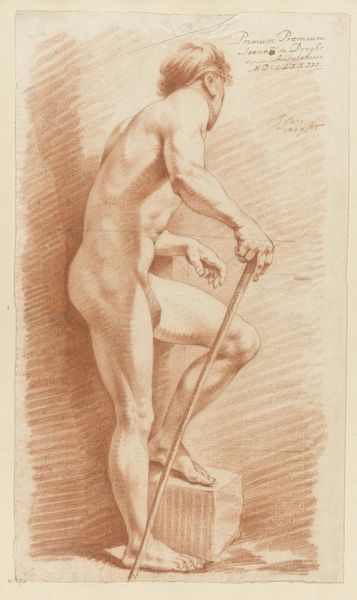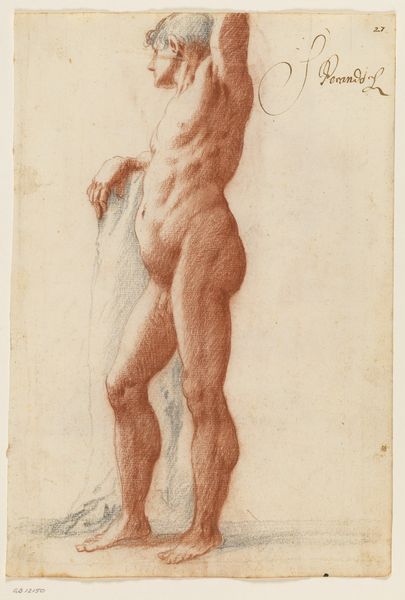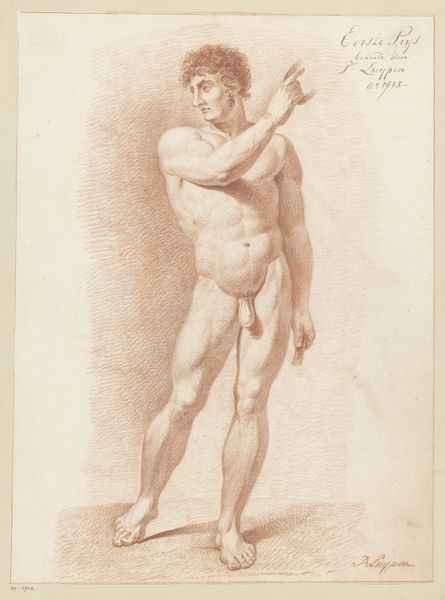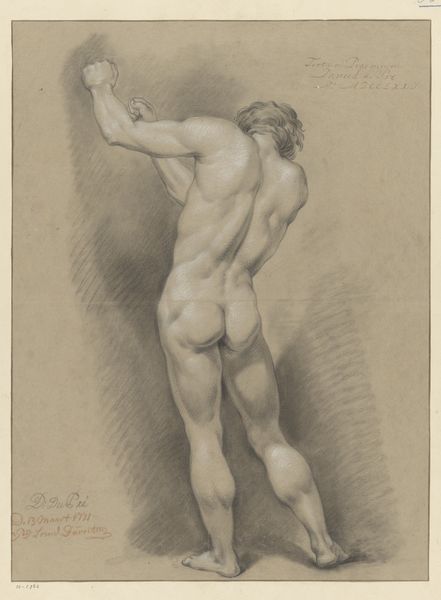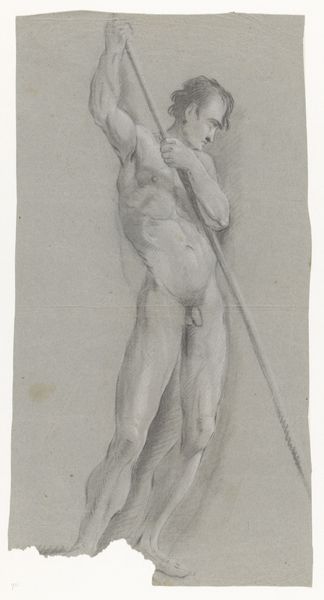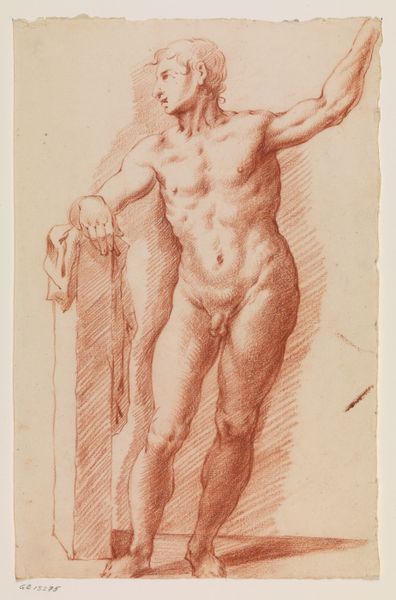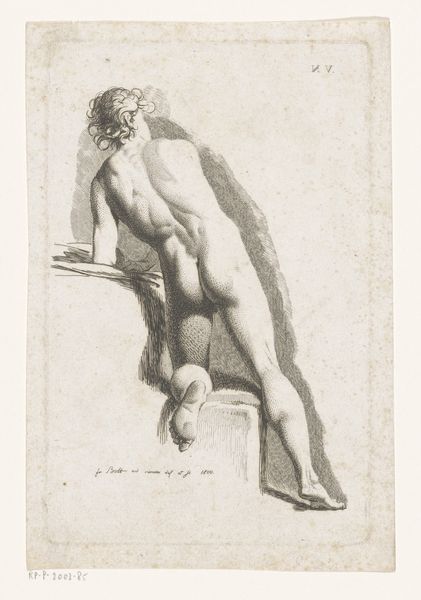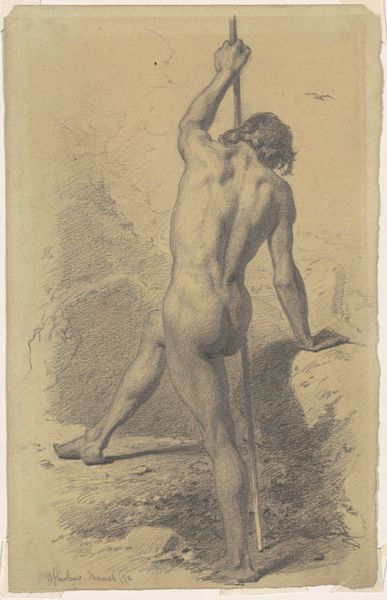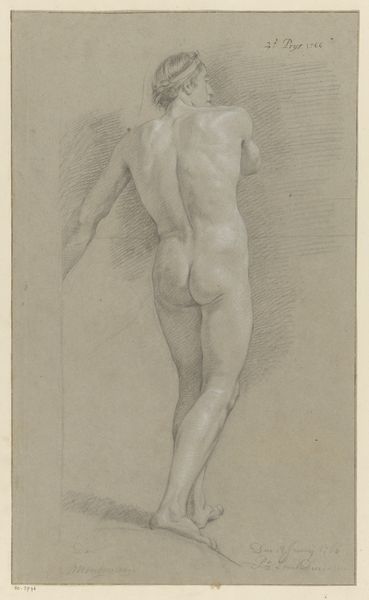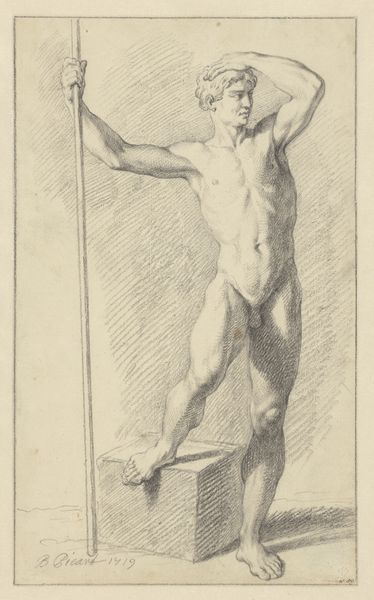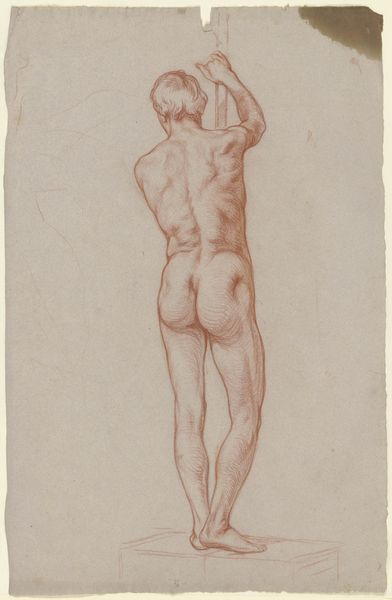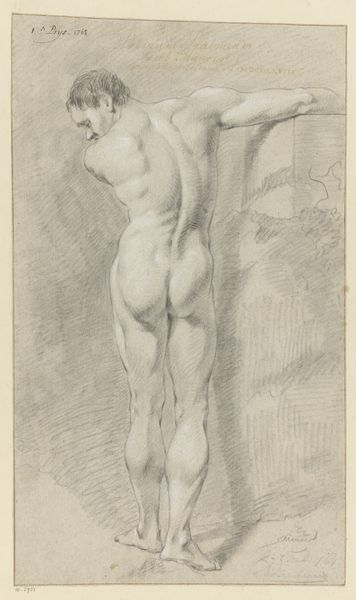
drawing, pencil
#
drawing
#
charcoal drawing
#
figuration
#
pencil drawing
#
pencil
#
academic-art
#
nude
Dimensions: height 418 mm, width 334 mm
Copyright: Rijks Museum: Open Domain
A. Waterloo made this drawing of a standing male nude, seen from the back, using pen in brown and red ink. The male nude has a long history in Western art, dating back to ancient Greece, where it was seen as embodying ideal beauty and strength. The image was revived during the Renaissance and has been popular ever since as a way of displaying artistic skill through the detailed study of anatomy. The artist has chosen to represent the figure from behind and included a long staff, perhaps to create a sense of mystery. The nude takes on a different meaning when seen through the lens of social history. Artists, then as now, were economically dependent on academies, patrons, and the art market. A study like this, while displaying artistic talent, would also have been aimed at a specific audience, such as a wealthy collector or fellow artist. Historical sources can help us understand this relationship between artistic intention and the social conditions of art production.
Comments
No comments
Be the first to comment and join the conversation on the ultimate creative platform.
